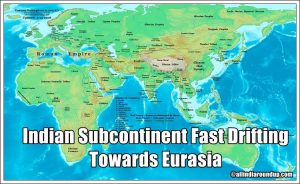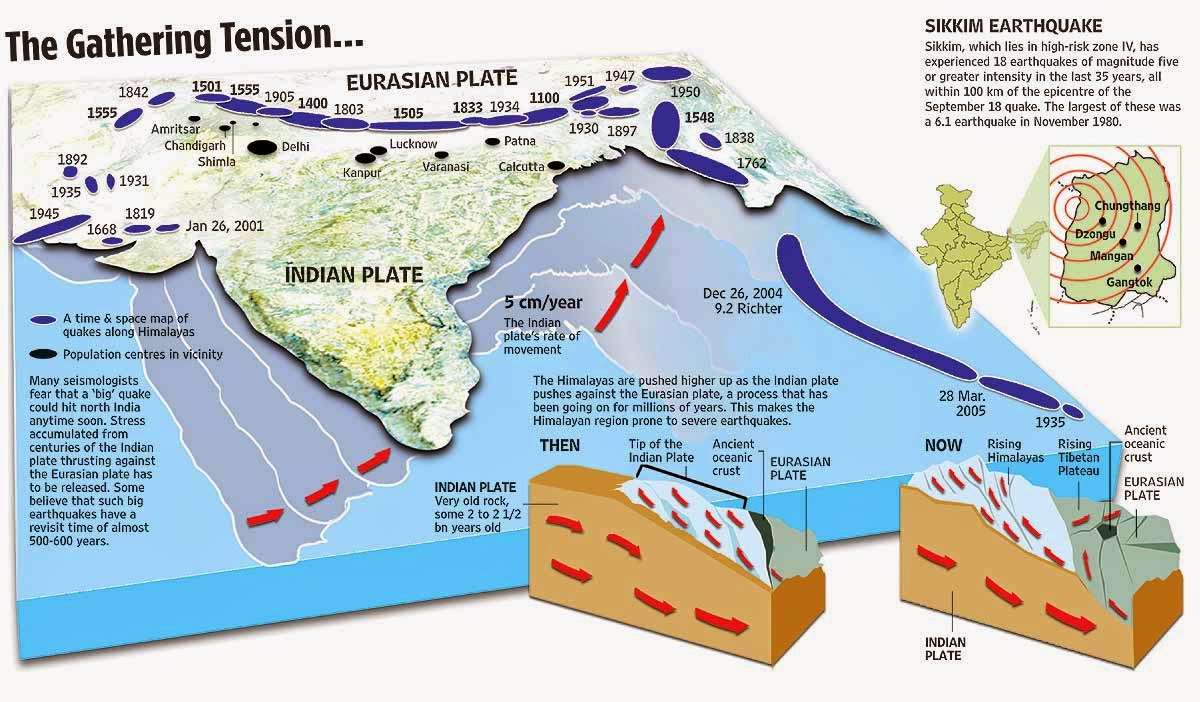
Crash into Eurasia: India moved at 5.9 inches/yr, say geologists
Massachusetts Institute of Technology (MIT) geologist had revealed hole-and-corner of the long lasting baffle of India’s record speed when it crashed into Eurasia 80 million years ago with the recent earthquake disclosed interior earth crust and the rocks movement.

Indian Subcontinent Drifted Faster Towards Eurasia
Indian peninsular subcontinent started floating at a noteworthy velocity after being cracking from the supercontinent Gondwana island which comprised the nations such as Madagascar, Arabia, Africa and South America. Geologist believe that Indian peninsular subcontinent has been drifting since a120 million years where its initial speed was of 40mm or 1.57 inches per year about 80 million years ago while all of a sudden the it has been accelerated to the 150mm or 5.9 inches per year. This sudden hike in the speed of Indian subcontinent reduced after 30 million years till it collided with Eurasia to gave rise to the giant mountains Himalayas.
The main reason behind the notable speed of India moving northwards after splitting from Gondwana in the southern hemisphere was the combination of two subduction zones as per the study published in Nature Geoscience. The region where the edge of one tectonic plate sinks under another plate is referred as double subduction zones which results in double pulling power along connecting landmasses. Professor Leigh Royden who works in geology and geophysics in Department of Earth, Atmospheric and Planetary Sciences of Massachusetts Institute of Technology (MIT) of said ” In earth science, it’s hard to be completely sure of anything, but there are so many pieces of evidence that all fit together here that we’re pretty convinced.”
During the recent studies and research at the Himalayan Region discovery of antique relics of two subduction zones and dating rocks by the geology and geophysicists Massachusetts Institute of Technology (MIT) has led to the development of a computer simulated model for a double subduction system and incorporated the measurements.

Massachusetts Institute of Technology (MIT) geology and geophysicists research believe that the width of the subducting plates and the distance between them caused India’s speed towards the Eurasia. Indian subcontinent could have drifted at a greater extent if the plates were relatively narrow and far apart. Professor Leigh Royden of MIT stated that “When you look at simulations of Gondwana breaking up, India comes slowly off of Antarctica, and suddenly it just zooms across.”
Stay tuned with us for more updates. Press Ctrl+D for all live updates and easy navigation to our web site from your web browser.